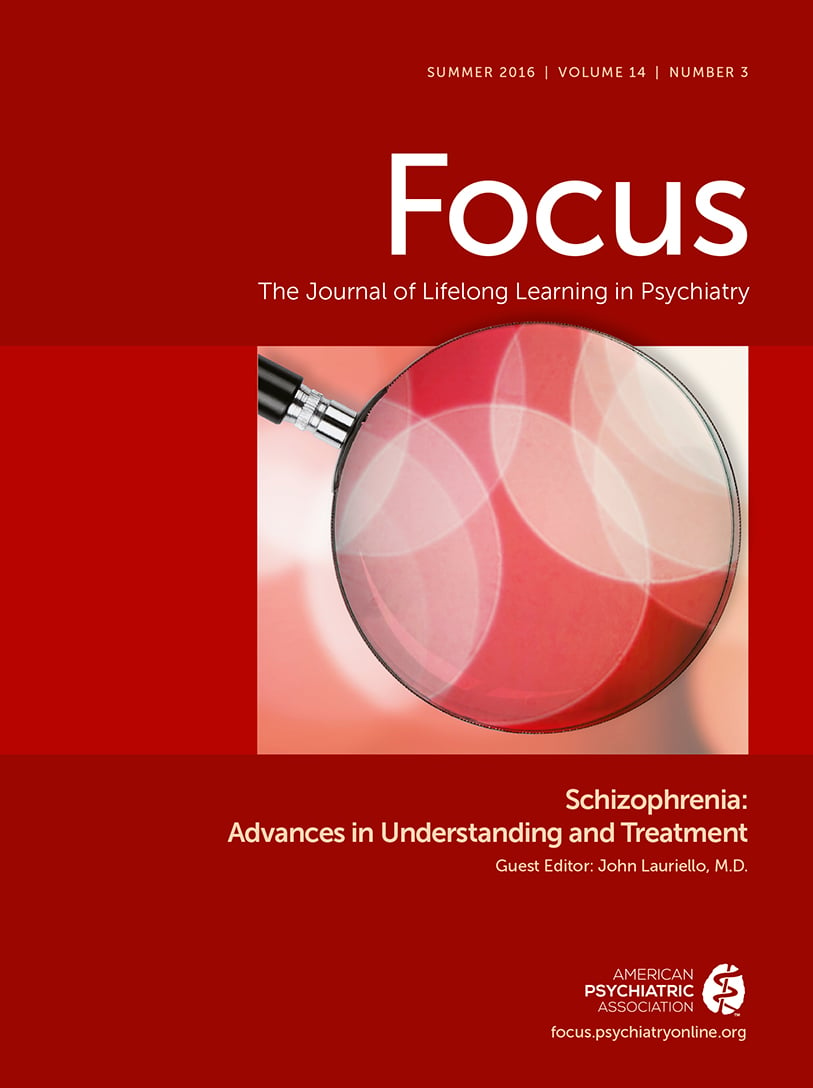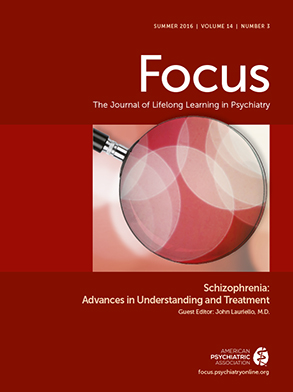Relationships and work are the scaffold of life and are addressed in this section on interventions targeting social and vocational recovery.
The Clubhouse (Fountain House) and Peer Support (WRAP) Models
The clubhouse model is the predecessor of peer-based interventions and is exemplified by Fountain House, whose history is described on its website: “The Fountain House traces its roots to the late 1940s at Rockland State Hospital in Orangeburg, New York. Six patients formed a group that met in a hospital ‘club room’ where they shared their stories, read, painted and participated in social functions. Soon after leaving Rockland, they joined together to re-create the respectful and supportive group they had formed in the hospital. . . . All believed they could offer each other support in life’s challenges and sustain their social community” (
www.fountainhouse.org/about/history). Clubhouse models also can provide community outplacement to “real” work settings in companies that provide a supportive work environment and, in return, rely on the clubhouse to guarantee adequate staffing. This arrangement offers clubhouse members real work that is also shared with the others in the clubhouse community. This approach is known as transitional employment. Clubhouse models have been enormously successful in supporting important aspects of personal recovery such as a sense of contribution, personal growth, and inclusiveness.
The sense of community that has been part of the success of the clubhouse model (
52) has also been an impetus for other peer support programs. One such program is known as Wellness Recovery Action Planning (WRAP). WRAP uses peers to help participants manage their own long-term illnesses whether or not they are also receiving traditional mental health services. In fact, WRAP peer educators are trained in using formal diagnoses or medical jargon. As an inherent part of the social inclusion aspect of the program, WRAP uses a group format that mixes coursework and personal narratives. The topics go beyond “mental illness” and encompass (as the program’s name implies) a broader range of health and wellness strategies (
53,
54). The overall results of a study using a version of WRAP targeting physical health issues showed positive changes, reduction of anxiety and depression, along with some reduction in use of more traditional mental health services (
54). From an evidence-based intervention perspective, clubhouse and peer models have been quite varied in their approaches and methods of service delivery, and even the most disseminated programs (e.g., Fountain House, WRAP) have not yet been adequately studied enough for definitive statements about them to be possible. Having said that, I should note that their shared attributes of social inclusion, respect, sanctuary, freedom of self-expression, and safety from the demands of formal treatment services are laudable, since there is widespread agreement among service users and mental health clinicians of the value of programs that can undo some of the damage caused by stigma and social exclusion (
55,
56).
Before the Ascendency of Supported Employment Interventions
For most of us, work is much more than a way to make a living. Work (or its academic equivalent) is a major part of our identity, providing meaning, structure, context, and social status. Schizophrenia often begins around a time of key changes in responsibilities and expectations, with work and career challenges that are often crucial to successful adulthood. The timing of disease onset could not be any worse in terms of disrupting this part of adult development, and it should not be a surprise that under- and unemployment are the rule, not the exception, among those given a diagnosis of schizophrenia.
Previously, the mainstream view in psychiatry had been that schizophrenia is permanently disabling. Before research on supported employment showed otherwise, it seemed obvious that returning to a “real” job would rarely, if ever, happen for a person with schizophrenia. Furthermore, even if returning to work was theoretically possible, it was not worth exposing patients to the stress of the competitive workplace because the stress would easily trigger a relapse. Therefore, before the arrival of the supported employment (SE) model, almost all “rehabilitation” programs for schizophrenia took place under sheltered conditions. In other words, patients would often go to another location to learn, rehearse, or practice job skills. Often the rehabilitation agenda would be “one size fits all,” and there would not be much communication between the patient’s mental health team and the rehabilitation service. On some level, “failure,” meaning that the patient would not transition to a real job, was perfectly acceptable to the mental health team, simply because the risk of potential relapse with the addition of more responsibilities was just not worth it. It was not a surprise that many of these “vocational” programs were actually more directed to other goals such as leisure time management or socialization skills.
Fortunately, a small cadre of rehabilitation specialists did not see it this way. They believed that persons with severe mental illness were not destined to fail. They believed that lack of employment was not the same as lack of capacity for employment. Their efforts in programmatic development and evidence-based research over the last few decades have resulted in the recognition that SE programs can often help disabled, persistently ill patients achieve their goal of competitive paid employment (
57,
58). There was enormous initial skepticism about the SE model, but its success has been replicated and it is now one of the accepted evidence-based psychosocial interventions. SE is now an accepted evidence-based practice whose aim is to help “people with [psychiatric] disabilities participate as much as possible in the competitive labor market, working in jobs they prefer with the level of professional help they need” (
59). The key elements of the SE model are shown in
Table 6 (
60).
As summarized in the 2009 Schizophrenia Patient Outcome Research (PORT) recommendations, “At this point, about 50% of patients enrolled in these [SE] programs will return to competitive employment at some point [in the course of their rehabilitation]” (
1, p. 51). The 2009 PORT recommendations also addressed and dismissed the concern that returning to work was too stressful and would worsen symptoms: “There is no evidence that [enrolling in an SE program] leads to … negative outcomes” (
1). The progress made in SE is tempered by the relative lack of access to these services nationwide. Also, the SE outcomes speak to the continued challenges in helping patients with ongoing employment. Success in SE is generally limited to roughly one half of patients who start SE actually achieving any competitive employment for a set period of time. Furthermore, many of those who achieve competitive employment in the short run do not go on to sustained employment or economic self-sufficiency (
61). Nonetheless, the current outcomes would not have been thought possible 25 years ago, so we can continue to be cautiously optimistic for even better outcomes for the next generation of rehabilitation interventions (
62).

